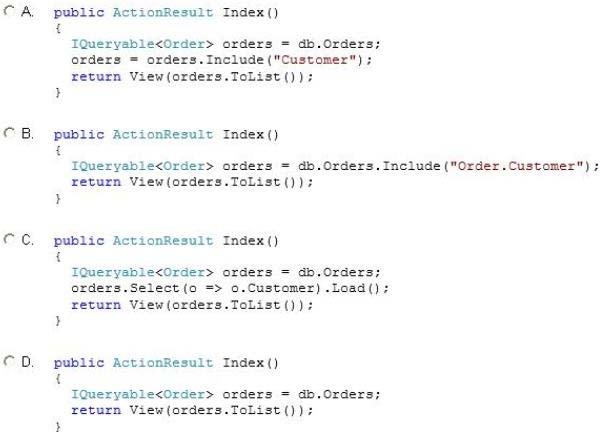

You are developing an ASP.NET MVC application. The application is an order processing system that uses the ADO.NET Entity Framework against a SQL Server database. It has a controller that loads a page that displays all orders along with customer information. Lazy loading has been disabled.
The Order class is shown below.
You need to return the orders and customer information in a single round trip to the database.
Which code segment should you use?
supersunny
Highly Voted 5 years, 4 months agoDreamchaser1980
Highly Voted 4 years, 9 months agoPtu12125
Most Recent 4 years, 5 months agoPtu12125
4 years, 5 months agoTinashe16
4 years, 6 months agommk1991
5 years, 3 months agoKarel_Gott
5 years, 3 months agonsch
5 years, 3 months agoSirMarv
5 years, 2 months agotanujgyan
5 years agomchen
5 years, 2 months agomr_
4 years, 11 months agommk1991
5 years, 3 months ago